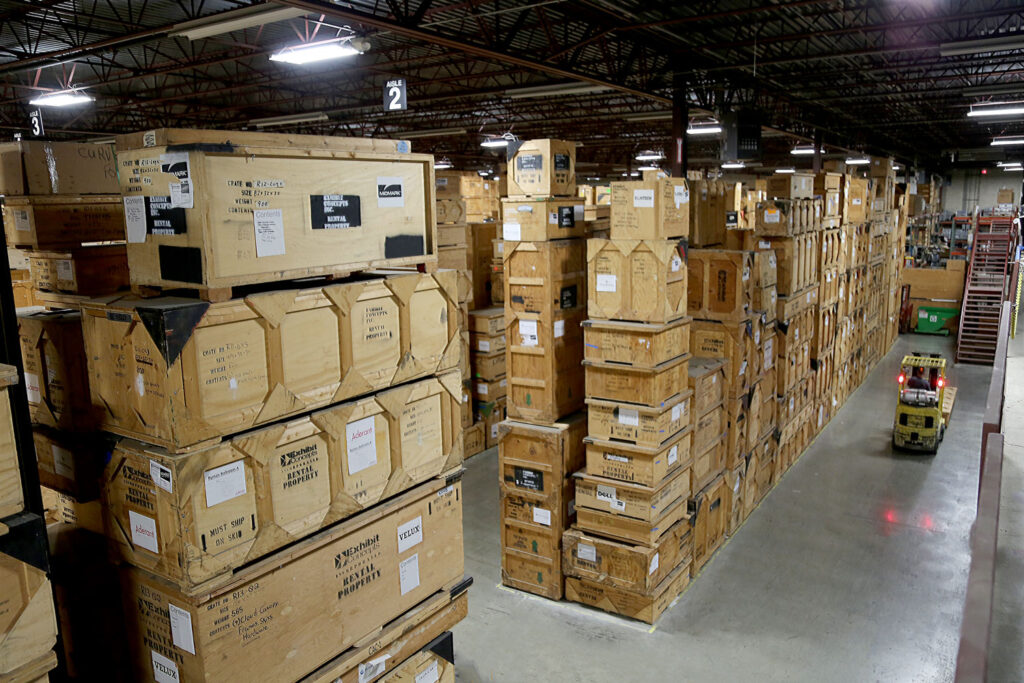“It depends.”
At Exhibit Concepts, this has become somewhat of an unofficial motto around our offices. After 40 years in the trade show, commercial interior, and museum industry, we know all too well that every project and each client is unique. When it comes to unique, however, nothing is more so than the wooden crates we use to ship property across the world for our customers.
There is no getting around it. Crates are expensive. And for clients with large exhibits requiring many crates, it can be a large line item cost. So, why are they so costly? What makes them such an important element of a successful trade show experience? When you know what goes into making these wooden marvels, it’s easy to see why the humble crate is much more than it seems.
Crates are Precious Snowflakes
It looks anything but special, a large but very plain wooden box with black letter stenciling. But they are special and have the most important job: they must protect and transport property as it travels all over the world. Crates must be strong, resilient, and reusable not just once, but for many years. No easy task, to be certain, but they are up for the job.
Each crate we build is 100% custom. It’s built by hand in a dedicated space in our production facility, designed and created with its specific contents in mind. This means that just like a snowflake, no two crates are exactly the same. Very special indeed.
In order to really appreciate what goes into building a crate, we have to go back to the beginning. At the beginning of any new project, our design and estimating team determine the number of crates required for a particular project. The work order is then passed to our crate builder Rick Rapp who enters all the specifications into a computer program. This produces a material list and he gets to work, carefully building each crate by hand with an AC plywood exterior, raw hardwood pine supports, and hardwood ply feet. Inside, crates are made of a 1 x 4 frame and covered in cotton felt to protect the contents and prevent any friction during the shipping process.
Crates are held together with plenty of staples, nails, and a generous helping of wood glue. Much like tires on a car, a crate is arguably the most important element of successful transportation.
Living the Crate Life
What is the life span of a crate? They’ve discovered the fountain of youth, it seems. Unless the crate itself is damaged (it happens now and then) it can last for decades—and is intended as long as a client wants to hold on to the property that is in the crate. 99% of the crates stored in our warehouse are shipped back and forth across the country numerous times each year and many have also traveled overseas. And they are constructed to withstand the elements as they are often staged outdoors temporarily before a trade show starts, so resiliency is key.
Crates vs. Skids
Crates aren’t the only option when shipping property to a trade show or museum installation. You could place property on a pallet or skid, which is significantly less costly. However, there are some major risks involved. For starters, a skid does not protect the property like a crate does—leaving the door open for irreversible damage. Even worse, skids cannot be stacked on top of one another. This means fewer items can fit in a truck, increasing shipping costs and when they return to our warehouse, they take up more area in storage.
There are literally thousands of crates stored in our warehouses. They contain millions of dollars in property. Our clients have made a sizable investment in their booth property and they have entrusted us to keep that property safe during transit or when being stored for longer periods. We take the task of protecting these items very seriously, and a well-designed and well-constructed crate is the key.
So here’s to the humble crate, which really isn’t that humble after all.









